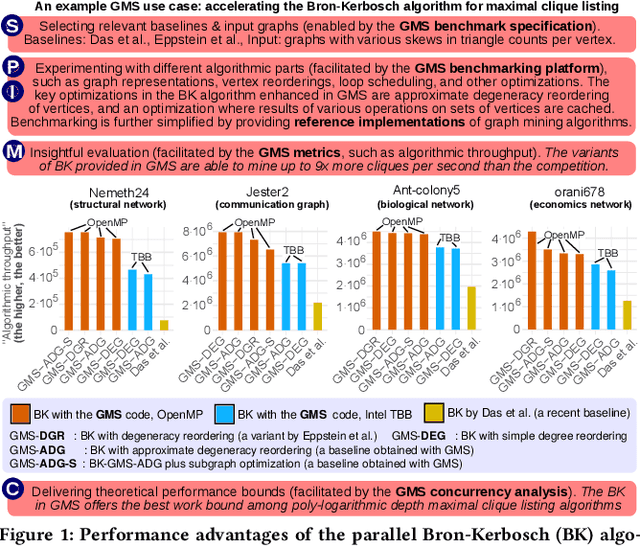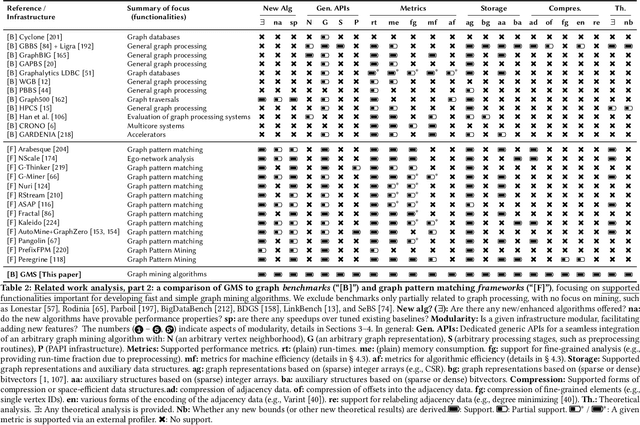Marcin Copik
Affordable AI Assistants with Knowledge Graph of Thoughts
Apr 03, 2025Abstract:Large Language Models (LLMs) are revolutionizing the development of AI assistants capable of performing diverse tasks across domains. However, current state-of-the-art LLM-driven agents face significant challenges, including high operational costs and limited success rates on complex benchmarks like GAIA. To address these issues, we propose the Knowledge Graph of Thoughts (KGoT), an innovative AI assistant architecture that integrates LLM reasoning with dynamically constructed knowledge graphs (KGs). KGoT extracts and structures task-relevant knowledge into a dynamic KG representation, iteratively enhanced through external tools such as math solvers, web crawlers, and Python scripts. Such structured representation of task-relevant knowledge enables low-cost models to solve complex tasks effectively. For example, KGoT achieves a 29% improvement in task success rates on the GAIA benchmark compared to Hugging Face Agents with GPT-4o mini, while reducing costs by over 36x compared to GPT-4o. Improvements for recent reasoning models are similar, e.g., 36% and 37.5% for Qwen2.5-32B and Deepseek-R1-70B, respectively. KGoT offers a scalable, affordable, and high-performing solution for AI assistants.
Reasoning Language Models: A Blueprint
Jan 20, 2025Abstract:Reasoning language models (RLMs), also known as Large Reasoning Models (LRMs), such as OpenAI's o1 and o3, DeepSeek-V3, and Alibaba's QwQ, have redefined AI's problem-solving capabilities by extending large language models (LLMs) with advanced reasoning mechanisms. Yet, their high costs, proprietary nature, and complex architectures - uniquely combining Reinforcement Learning (RL), search heuristics, and LLMs - present accessibility and scalability challenges. To address these, we propose a comprehensive blueprint that organizes RLM components into a modular framework, based on a survey and analysis of all RLM works. This blueprint incorporates diverse reasoning structures (chains, trees, graphs, and nested forms), reasoning strategies (e.g., Monte Carlo Tree Search, Beam Search), RL concepts (policy, value models and others), and supervision schemes (Output-Based and Process-Based Supervision). We also provide detailed mathematical formulations and algorithmic specifications to simplify RLM implementation. By showing how schemes like LLaMA-Berry, QwQ, Journey Learning, and Graph of Thoughts fit as special cases, we demonstrate the blueprint's versatility and unifying potential. To illustrate its utility, we introduce x1, a modular implementation for rapid RLM prototyping and experimentation. Using x1 and a literature review, we provide key insights, such as multi-phase training for policy and value models, and the importance of familiar training distributions. Finally, we outline how RLMs can integrate with a broader LLM ecosystem, including tools and databases. Our work demystifies RLM construction, democratizes advanced reasoning capabilities, and fosters innovation, aiming to mitigate the gap between "rich AI" and "poor AI" by lowering barriers to RLM development and experimentation.
Topologies of Reasoning: Demystifying Chains, Trees, and Graphs of Thoughts
Jan 25, 2024Abstract:The field of natural language processing (NLP) has witnessed significant progress in recent years, with a notable focus on improving large language models' (LLM) performance through innovative prompting techniques. Among these, prompt engineering coupled with structures has emerged as a promising paradigm, with designs such as Chain-of-Thought, Tree of Thoughts, or Graph of Thoughts, in which the overall LLM reasoning is guided by a structure such as a graph. As illustrated with numerous examples, this paradigm significantly enhances the LLM's capability to solve numerous tasks, ranging from logical or mathematical reasoning to planning or creative writing. To facilitate the understanding of this growing field and pave the way for future developments, we devise a general blueprint for effective and efficient LLM reasoning schemes. For this, we conduct an in-depth analysis of the prompt execution pipeline, clarifying and clearly defining different concepts. We then build the first taxonomy of structure-enhanced LLM reasoning schemes. We focus on identifying fundamental classes of harnessed structures, and we analyze the representations of these structures, algorithms executed with these structures, and many others. We refer to these structures as reasoning topologies, because their representation becomes to a degree spatial, as they are contained within the LLM context. Our study compares existing prompting schemes using the proposed taxonomy, discussing how certain design choices lead to different patterns in performance and cost. We also outline theoretical underpinnings, relationships between prompting and others parts of the LLM ecosystem such as knowledge bases, and the associated research challenges. Our work will help to advance future prompt engineering techniques.
GraphMineSuite: Enabling High-Performance and Programmable Graph Mining Algorithms with Set Algebra
Mar 05, 2021



Abstract:We propose GraphMineSuite (GMS): the first benchmarking suite for graph mining that facilitates evaluating and constructing high-performance graph mining algorithms. First, GMS comes with a benchmark specification based on extensive literature review, prescribing representative problems, algorithms, and datasets. Second, GMS offers a carefully designed software platform for seamless testing of different fine-grained elements of graph mining algorithms, such as graph representations or algorithm subroutines. The platform includes parallel implementations of more than 40 considered baselines, and it facilitates developing complex and fast mining algorithms. High modularity is possible by harnessing set algebra operations such as set intersection and difference, which enables breaking complex graph mining algorithms into simple building blocks that can be separately experimented with. GMS is supported with a broad concurrency analysis for portability in performance insights, and a novel performance metric to assess the throughput of graph mining algorithms, enabling more insightful evaluation. As use cases, we harness GMS to rapidly redesign and accelerate state-of-the-art baselines of core graph mining problems: degeneracy reordering (by up to >2x), maximal clique listing (by up to >9x), k-clique listing (by 1.1x), and subgraph isomorphism (by up to 2.5x), also obtaining better theoretical performance bounds.
 Add to Chrome
Add to Chrome Add to Firefox
Add to Firefox Add to Edge
Add to Edge